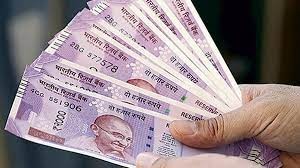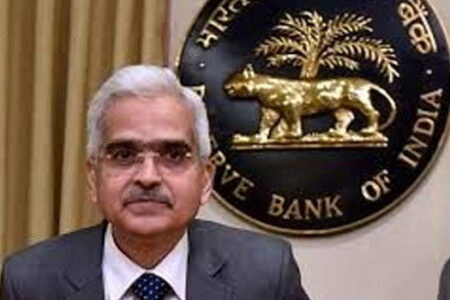In mid-August, India and the United Arab Emirates (UAE) started settling bilateral trade in their local currencies with Indian Oil Corporation Ltd paying the Abu Dhabi National Oil Company in rupees for the purchase of a million barrels of oil.
This transaction happened roughly a month after the Reserve Bank of India (RBI) and the Central Bank of the UAE signed two agreements in Abu Dhabi for creating a framework to promote the use of local currencies for cross-border transactions, and interlinking their payment and messaging systems.
The objective was to ensure seamless cross-border transactions and payments. This could be done by putting in place a Local Currency Settlement System (LCSS) for use of the Indian rupee (INR) and the UAE Dirham (AED) bilaterally.
The agreement covers all current account transactions and capital account transactions that are permitted. Once in place, the LCSS will help exporters and importers invoice and pay in their respective domestic currencies and, over a period, develop an INR-AED foreign exchange market.
Ahead of this, till March, the RBI allowed banks from as many as 18 countries to open special rupee vostro accounts for settling payments in INR. (A vostro account is one that a correspondent bank holds on behalf of another bank.) The RBI had granted approval to 60 vostro accounts that are authorised to deal with foreign currencies from Botswana, Fiji, Germany, Guyana, Israel, Kenya, Malaysia, Mauritius, Myanmar, New Zealand, Oman, Russia, Seychelles, Singapore, Sri Lanka, Tanzania, Uganda and the United Kingdom.
The process of settlement of exports/imports through special rupee vostro accounts began in July 2022 when the RBI announced the norms for international trade settlements in INR.
A July 11, 2022, circular of the central bank spoke about an arrangement for invoicing, payment and settlement of exports/imports in rupee under the Foreign Exchange Management Act, 1999.
It dealt with three key issues — invoicing (all exports and imports under this arrangement may be denominated and invoiced in rupee); exchange rate (exchange rate between the currencies of the two trading partner countries may be market determined); and settlement (the settlement of trade transactions under this arrangement shall take place in rupee).
Indian companies importing through this mechanism shall make payment in rupee, which shall be credited into the special rupee vostro account of the correspondent bank of the partner country, against the invoices for the supply of goods or services from the overseas seller/supplier.
Similarly, Indian companies, exporting goods and services through this mechanism, shall be paid the export proceeds in rupee from the balances in the designated special rupee vostro account of the correspondent bank of the partner country.
What will an exporter country do with the surplus rupee (where the country’s import bill is less than exports)? Well, the rupee balance kept in a special vostro account can be used for managing the future export/import flow; investments in projects in India; as well as investment in treasury bills and government bonds.
Ever since this circular was issued, the hottest conversation topic on every bank’s treasury floor has been internationalisation of the rupee. There are various theories doing the rounds. The trigger for the RBI circular is the sanctions against Russia after its invasion of Ukraine in February last year. Trade in local currencies is being explored as a solution to sanctions, which are affecting supply chain and global trade flows.
But, going beyond this, the internationalisation of the rupee is a matter of big debate in the banking and political circles. Those who consider the rupee as a proxy for virility have started thumping their chests and dreaming of dethroning the dollar from its coveted position. They have started seeing the rupee as a reserve currency.
A reserve currency, also called anchor currency, a hard currency or safe-haven currency, is a foreign currency that is held in significant quantities by central banks of different nations as part of their foreign exchange reserves. Such a currency is used in international transactions, international investments, and all aspects of the global economy.
The pound sterling of the UK was the primary reserve currency for a large part of the world in the 19th century and first half of the 20th century till the United States dollar became the dominant reserve currency. At the moment, the US dollar, the Euro, the Japanese yen and the British pound are the leading reserve currencies in the world. Till 2022, the dollar’s share of the global foreign exchange reserve was 58.36 per cent, followed by euro (20.47 per cent), Japanese yen (5.51 per cent) and pound sterling (4.91 per cent).
There are others who are extremely cynical about the rupee’s future as an international currency. How can we dream of this when India’s share of global exports is in low single digits, they argue. Besides India’s rating, restrictions on capital account convertibility are also a handicap. Like the rupee, the Chinese yuan is not fully convertible on the capital account but is part of the special drawing rights, or SDR, an international reserve asset created by the International Monetary Fund to supplement the official reserves of its member countries. A basket of currencies that defines the SDR are the US dollar, euro, Chinese yuan, Japanese yen, and the British pound. The INR is not there.
Finally, India’s little over $1 trillion government bond market is the largest in the emerging world but it is still not included in the global indices. How can we talk about taking the rupee beyond the border?
Let’s not beat about the bush.
What is a currency? Currency, which had replaced the barter system, is a medium of exchange that is centralised, generally accepted and recognised, and facilitates transactions of goods and services. It’s a unit of account that expresses its value, a medium of exchange and has a store value.
In other words, it’s an asset, which, over time, retains its value (of course, inflation can erode it) and allows us to preserve our wealth. Of the three, beyond a unit of account and medium of exchange, the US dollar draws its biggest strength as a class of asset that every country is willing to hoard.
The internationalisation of the rupee loosely means the external world will use the Indian currency as a medium of exchange; it will have its store value and it’s a class of assets. Will that happen overnight? Or even in a decade after India becomes the world’s third-largest economy? Certainly not. But by allowing invoicing in rupee and settling trade in the local currency, the RBI is facilitating the process.
What’s the immediate benefit of this? Let’s take the case of the UAE, which exports more to India than what it imports from here. The UAE will now keep the export proceeds in rupee. If it wants to, it can invest the rupee in Indian projects or convert it into dollars and take the money back to the UAE.
Either way, we get the benefit. Even if the UAE decides not to invest and take the money out, the exchange risk is being borne by the UAE and not India, which is paying in rupee. As more and more such transactions happen with different geographies, the pressure on balance of payment will ease and the importance of holding dollar reserves will decline. Aren’t there good reasons to push for rupee internationalisation?
Meanwhile, India is exploring setting up its own international financing messaging system, on the lines of SWIFT — Society for Worldwide Interbank Financial Telecommunication — for international electronic funds transfer. The RBI has an existing platform, the Structured Financial Messaging System. The new system can be built on this.
This column first appeared in Business Standard
The columnist is a Consulting Editor with Business Standard and Senior Adviser to Jana Small Finance Bank.
His latest book: Roller Coaster: An Affair With Banking
Twitter: TamalBandyo
Website: https://bankerstrust.in



